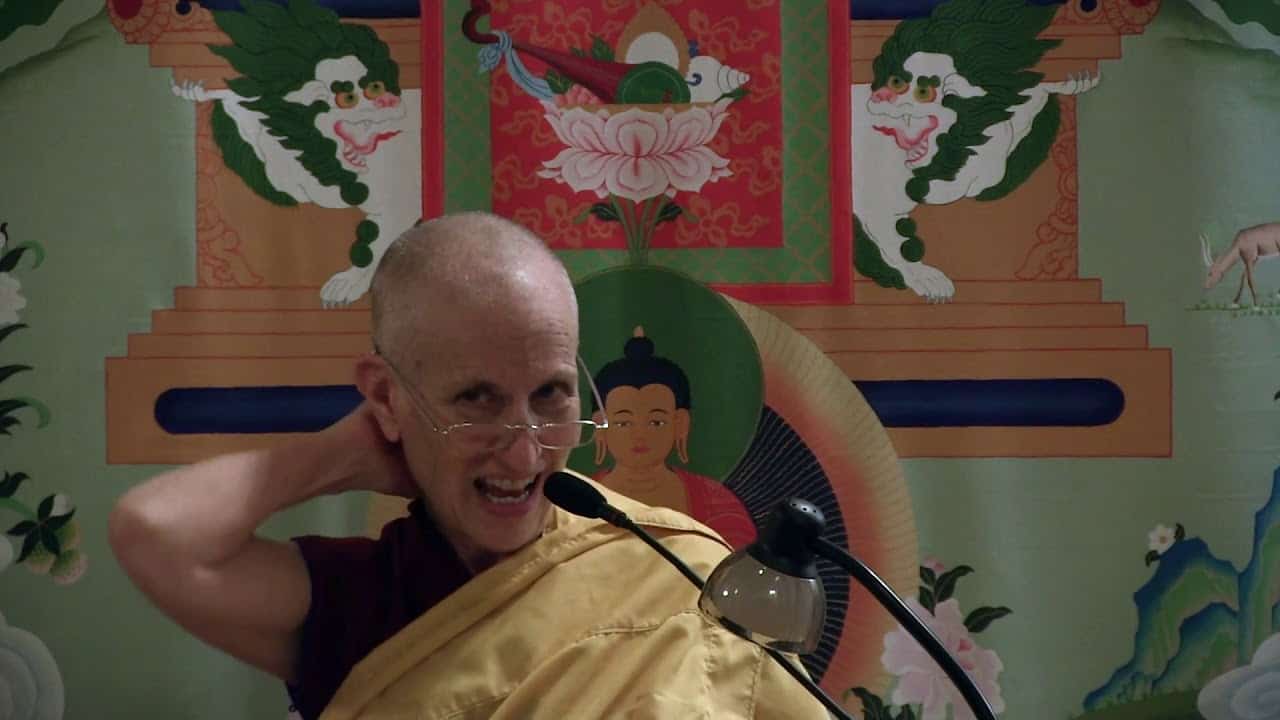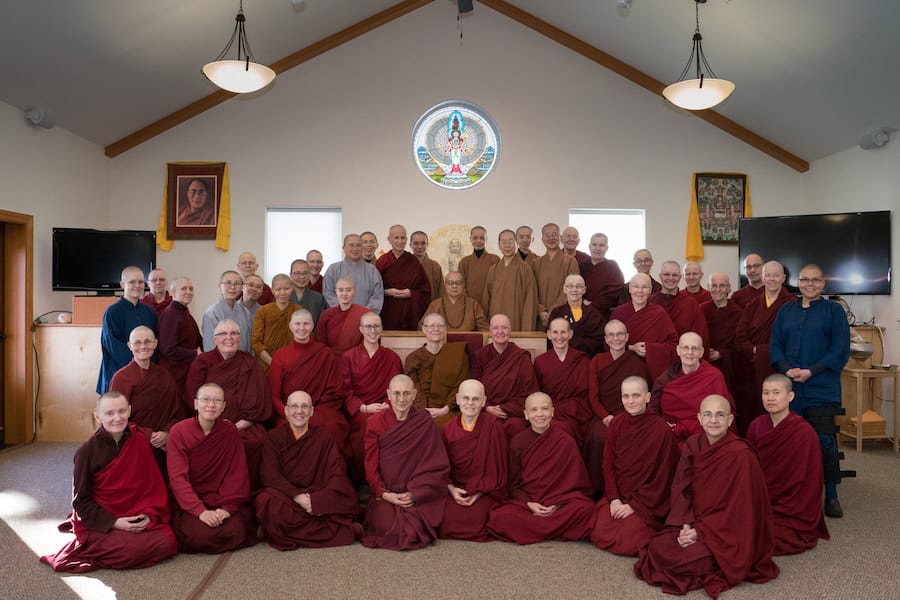Identifying afflictive ignorance
The text turns to training the mind on the stages of the path of advanced level practitioners. Part of a series of teachings on the Gomchen Lamrim by Gomchen Ngawang Drakpa. Visit Gomchen Lamrim Study Guide for a full list of contemplation points for the series.
- The two types of insight: coarseness and subtleness
- Definitive versus provisional texts
- Recognizing the object of negation
- Different tenant schools’ views and the meaning of the mere I
- Innate versus acquired self-grasping
Gomchen Lamrim 125: Identifying Afflictive Ignorance (download)
Contemplation points
- In the introduction, and in response to a Washington Post piece, Venerable Chodron taught that one way we influence the world around us is through our attitudes. Consider this point:
- If you are surrounded by people who are discouraged and bitter, how does that influence the way you live your life, your ideas and actions?
- Conversely, if you are surrounded by people who are hopeful, happy, and are practicing the path, how does that influence the way you live your life, your ideas and actions?
- Consider that you have the same potential for influence over others. Venerable Chodron said that it is not the act that is so crucial, but the attitude, and that if we work hard in our practice, then just how we live our lives influences others in a beneficial way.
- Identify particular attitudes and situations in which you’d like to shift your mind from discouraged and bitter to hopeful and encouraging. Resolve to transform your own mind as a means of influencing the world and the people around you in a beneficial way.
- Why is it so important to cultivate the correct view before meditating to develop insight into emptiness?
- Consider the process of grasping at true existence: First we have the basis, either of persons or phenomena. Upon that basis, our ignorant mind looks at that thing or person and it appears to us as being truly existent, as existing out there, independent of causes and conditions. Finally, our mind assents to that appearance. Make examples of this.
- Consider that the object of negation does not exist at all. The basis exists on the conventional level, but the truly existent object that appears to us, and that we believe in, does not exist. If it helps, use Venerable Chodron’s example of being born with sunglasses to distinguish between what exists and what does not exist.
- The text asserts, from the view of the Prasangika, that the mere “I” is neither a storehouse consciousness, nor the mind itself. Why can the mere “I” be neither of these things? What is the mere “I”?
- What is the difference between grasping at a permanent, unitary, and independent self vs. grasping at a truly existent self? Which is more subtle and why?
Venerable Thubten Chodron
Venerable Chodron emphasizes the practical application of Buddha’s teachings in our daily lives and is especially skilled at explaining them in ways easily understood and practiced by Westerners. She is well known for her warm, humorous, and lucid teachings. She was ordained as a Buddhist nun in 1977 by Kyabje Ling Rinpoche in Dharamsala, India, and in 1986 she received bhikshuni (full) ordination in Taiwan. Read her full bio.


